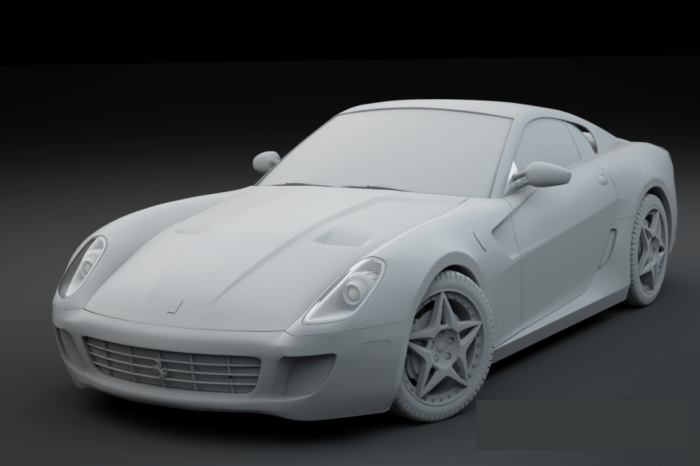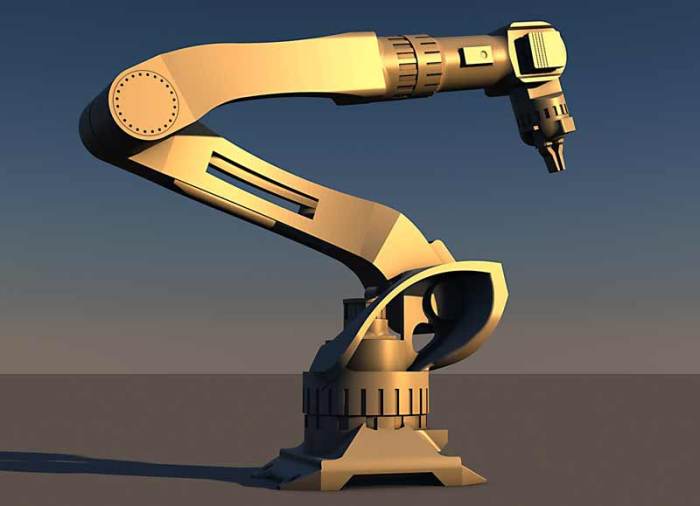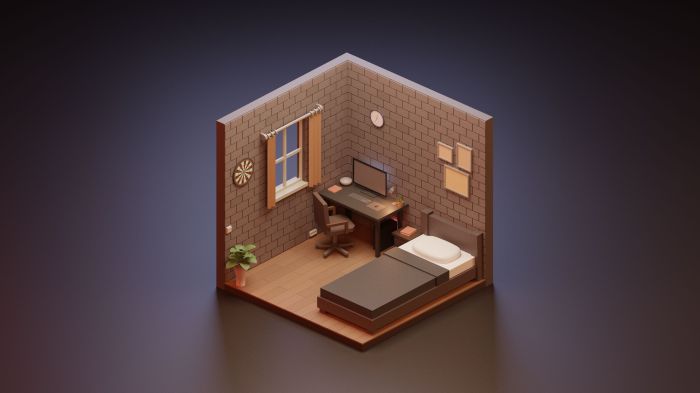3D model ideas are the seeds of innovation, waiting to sprout into stunning digital creations. From lifelike characters to sprawling environments, the possibilities are endless. Whether you’re a seasoned artist or a curious beginner, exploring the world of 3D modeling can ignite your imagination and unlock new avenues of expression.
This guide dives deep into the exciting realm of 3D model ideas, covering everything from popular categories and essential techniques to design principles and inspiring resources. We’ll also delve into the diverse applications of 3D models, showcasing their impact across industries and sparking your own creative ambitions.
Popular 3D Model Categories
The world of 3D modeling encompasses a wide range of categories, each with its own unique characteristics and applications. From realistic characters to intricate environments, 3D models have become an integral part of various industries and creative endeavors.
Character Models
Character models are perhaps the most popular category in 3D modeling. They are used in a wide variety of applications, including video games, animation, and film. Character models can be realistic, stylized, or even abstract, depending on the desired aesthetic and purpose.
- Realistic Characters:These models strive for accuracy in anatomy, proportions, and detail, often used in film and high-end video games.
- Stylized Characters:These models prioritize artistic expression and unique designs, commonly found in animation, cartoons, and mobile games.
- Abstract Characters:These models explore unconventional forms and shapes, often used in experimental animation or art installations.
Vehicle Models
Vehicle models encompass a vast array of transportation, ranging from cars and motorcycles to airplanes and spaceships. These models are essential for automotive design, visualization, and entertainment purposes.
- Cars and Motorcycles:These models are used in automotive design, advertising, and video games, often featuring intricate details and realistic materials.
- Aircraft and Spacecraft:These models are used in aerospace design, simulation, and science fiction entertainment, emphasizing aerodynamics and futuristic designs.
- Other Vehicles:This category includes a wide range of vehicles, from boats and trains to futuristic concepts and fantasy creations.
Environment Models
Environment models create immersive and detailed worlds for various applications, including video games, animation, and architectural visualization.
- Outdoor Environments:These models recreate natural landscapes, cities, and rural settings, often incorporating realistic textures and lighting.
- Indoor Environments:These models focus on interior spaces, such as houses, offices, and shops, emphasizing realistic furniture, decorations, and lighting.
- Abstract Environments:These models explore unique and imaginative worlds, often found in fantasy or science fiction projects.
Prop Models

Prop models are smaller objects that add detail and realism to 3D scenes. They can range from simple everyday items to complex weapons and tools.
- Weapons and Tools:These models are used in video games, animation, and film, often featuring intricate details and realistic materials.
- Furniture and Decorations:These models are used in interior design, visualization, and video games, adding realism and ambiance to scenes.
- Other Props:This category includes a wide range of objects, from clothing and accessories to food and plants.
3D Modeling Techniques
Creating 3D models involves various techniques, each with its own strengths and weaknesses. Understanding these techniques is crucial for choosing the right approach for your specific project.
Polygon Modeling
Polygon modeling is a traditional and widely used technique that involves creating 3D objects by manipulating polygons, which are basic geometric shapes like triangles and quadrilaterals. It offers a high level of control and precision, allowing for intricate details and complex shapes.
- Advantages:High level of control, precise detail, good for hard-surface modeling.
- Disadvantages:Can be time-consuming, requires a strong understanding of geometry, not ideal for organic shapes.
Sculpting

Sculpting involves digitally sculpting 3D objects using tools that mimic traditional sculpting techniques. This method allows for organic shapes and smooth surfaces, making it ideal for characters, creatures, and other organic forms.
- Advantages:Easy to use, intuitive workflow, great for organic shapes.
- Disadvantages:Can be difficult to control detail, not as precise as polygon modeling, may require additional retopology for high-resolution models.
Procedural Modeling
Procedural modeling involves creating 3D objects using algorithms and mathematical formulas. This technique allows for complex and repetitive shapes, often used for generating terrains, environments, and intricate patterns.
- Advantages:Efficient for creating complex and repetitive shapes, can be highly customizable, allows for procedural animation and effects.
- Disadvantages:Requires programming knowledge, can be difficult to control, not suitable for all types of models.
| Technique | Complexity | Flexibility | Control |
|---|---|---|---|
| Polygon Modeling | High | High | High |
| Sculpting | Medium | High | Medium |
| Procedural Modeling | High | High | Medium |
3D Model Design Principles
Effective 3D model design goes beyond just creating visually appealing objects. It involves applying fundamental design principles that enhance the model’s aesthetic appeal, functionality, and overall impact.
Balance and Proportion
Balance refers to the visual equilibrium of a 3D model, ensuring that no part overpowers or distracts from the overall composition. Proportion refers to the harmonious relationship between the sizes of different elements within the model. Maintaining balance and proportion creates a visually pleasing and cohesive design.
Symmetry and Asymmetry
Symmetry refers to the mirror-like reflection of a model’s elements along a central axis. Asymmetry, on the other hand, breaks this symmetry, creating visual interest and dynamism. Choosing the right balance between symmetry and asymmetry depends on the desired aesthetic and purpose of the model.
Contrast and Emphasis
Contrast refers to the differences in visual elements within a model, such as shape, color, and texture. This contrast helps to create visual interest and emphasize specific areas or features. Effective use of contrast can enhance the overall impact and readability of the model.
Examples of Well-Designed 3D Models
Numerous 3D models demonstrate the effective application of design principles. For instance, a well-designed character model will exhibit balance in its proportions, creating a harmonious and believable figure. An environment model might utilize contrast in color and texture to highlight key areas and create a sense of depth and realism.
By studying and analyzing well-designed 3D models, you can gain valuable insights into the application of these principles.
Applications of 3D Models
3D models have become ubiquitous in various industries and creative endeavors, revolutionizing how we design, visualize, and interact with the world around us.
Gaming
3D models are essential for creating immersive and realistic gaming experiences. They are used to design characters, environments, weapons, and other objects that players interact with within the game world. The use of 3D models has significantly enhanced the visual fidelity and gameplay of modern video games.
Animation
3D models are the foundation of animation, bringing characters and stories to life. Animators use 3D models to create realistic or stylized movements, expressions, and interactions, resulting in captivating and engaging animated films, TV shows, and commercials.
Visualization
3D models are used for creating realistic visualizations in various fields, including architecture, engineering, and product design. They allow designers and clients to experience and understand complex projects before they are built or manufactured, leading to more informed decision-making and improved outcomes.
Product Design
3D models are widely used in product design, allowing designers to create prototypes and explore different designs before committing to physical production. This process streamlines the design process, reduces costs, and facilitates rapid iteration and improvement.
| Application | Uses | Benefits |
|---|---|---|
| Gaming | Character design, environment creation, object modeling | Immersive gameplay, realistic visuals, enhanced storytelling |
| Animation | Character animation, scene design, visual effects | Realistic or stylized movements, engaging storytelling, captivating visuals |
| Visualization | Architectural design, engineering projects, product design | Improved understanding, informed decision-making, cost reduction |
| Product Design | Prototyping, design exploration, visualization | Rapid iteration, cost reduction, improved design quality |
Inspiration and Resources for 3D Modeling: 3d Model Ideas
The world of 3D modeling is brimming with inspiration and resources for artists of all levels. Exploring these resources can fuel your creativity, expand your skillset, and help you discover new possibilities.
Websites and Communities
Numerous websites and online communities cater to the 3D modeling community, offering inspiration, tutorials, and opportunities for collaboration. Some popular platforms include:
- ArtStation:A popular platform for showcasing and discovering 3D art, featuring portfolios from artists worldwide.
- CGSociety:A community for CG artists, offering forums, tutorials, and industry news.
- Sketchfab:A platform for sharing and discovering 3D models, with a vast library of models available for viewing and download.
3D Modeling Software and Tools
Various 3D modeling software programs offer a range of features and capabilities, catering to different needs and skill levels. Some popular options include:
- Blender:A free and open-source software with a wide range of features, suitable for beginners and professionals alike.
- Maya:A professional-grade software widely used in the film and game industries, known for its advanced features and powerful tools.
- ZBrush:A popular sculpting software used for creating organic shapes and detailed models, renowned for its intuitive interface and powerful tools.
Inspiring 3D Models
Exploring the work of renowned 3D artists and studios can provide invaluable inspiration for your own creations. Artists like Scott Eaton, Alex Oliver, and WETA Digital have pushed the boundaries of 3D modeling, creating stunning and innovative works that showcase the power and potential of the medium.
Creating Unique 3D Model Ideas
Generating unique and original 3D model ideas requires a combination of inspiration, exploration, and creative thinking. Here are some strategies to spark your imagination and help you develop fresh and innovative concepts.
Explore Personal Interests
Start by reflecting on your own passions, hobbies, and areas of interest. What subjects or themes resonate with you? What stories or concepts would you like to bring to life? By tapping into your personal interests, you can create 3D models that are both meaningful and engaging.
Follow Current Trends
Staying informed about current trends in art, design, and technology can inspire new ideas and approaches to 3D modeling. Explore emerging technologies, design movements, and cultural shifts to identify potential areas for exploration and innovation.
Embrace Creative Challenges
Setting creative challenges for yourself can push you to think outside the box and develop unique ideas. Experiment with different materials, textures, and techniques, or try to create models that defy traditional conventions. By embracing challenges, you can unlock new possibilities and expand your creative horizons.
Examples of Innovative 3D Model Ideas
Numerous 3D modelers have created innovative and thought-provoking works that push boundaries and explore new possibilities. For example, artists have developed 3D models that interact with the real world, respond to user input, or explore abstract and surreal concepts. By studying these examples, you can gain insights into the creative potential of 3D modeling and develop your own unique ideas.
3D Modeling for Beginners
Learning 3D modeling can be a rewarding and fulfilling journey, opening up a world of creative possibilities. Whether you’re interested in game design, animation, or simply exploring the artistic potential of the medium, this guide provides a step-by-step approach to get you started.
Step 1: Choose 3D Modeling Software
The first step is to select 3D modeling software that suits your needs and skill level. For beginners, Blender is a great option due to its free and open-source nature and user-friendly interface. Other popular choices include Maya, ZBrush, and 3ds Max.
Step 2: Learn the Basics
Once you’ve chosen your software, it’s time to learn the fundamentals of 3D modeling. Start by understanding the basic tools and techniques, such as creating polygons, extruding shapes, and manipulating objects. Numerous online tutorials and resources are available to guide you through this process.
Step 3: Practice with Simple Models
The best way to learn 3D modeling is through practice. Start with simple models, such as cubes, spheres, and cylinders. As you become more comfortable, gradually move on to more complex objects and scenes.
Step 4: Explore Different Techniques
Once you have a grasp of the basics, experiment with different modeling techniques, such as polygon modeling, sculpting, and procedural modeling. Each technique offers unique advantages and disadvantages, and exploring them will broaden your skillset and creative options.
Step 5: Build Your Portfolio
As you progress, create a portfolio of your 3D models to showcase your skills and creativity. This portfolio can be a valuable asset when applying for jobs or seeking collaborations.
Step 6: Stay Inspired and Keep Learning

The world of 3D modeling is constantly evolving, so it’s essential to stay inspired and keep learning. Explore new software, techniques, and resources to expand your knowledge and creative horizons.
Wrap-Up
So, unleash your creativity, experiment with different techniques, and let your 3D model ideas take flight. The world of 3D modeling is brimming with potential, and with a little inspiration and guidance, you can bring your visions to life, one pixel at a time.
FAQ
What are some common mistakes beginners make in 3D modeling?
A common mistake is neglecting to plan and sketch out their ideas before jumping into the software. Another is not taking the time to learn the fundamentals of 3D modeling software, leading to frustration and inefficient workflows.
What are some good resources for learning 3D modeling?
There are tons of great online resources, including tutorials on YouTube, courses on platforms like Udemy and Skillshare, and dedicated communities like Blender Artists and Polycount.
How can I make my 3D models stand out?
Focus on creating unique and interesting concepts, experimenting with different materials and textures, and paying attention to lighting and composition. Also, don’t be afraid to push boundaries and explore unconventional ideas.